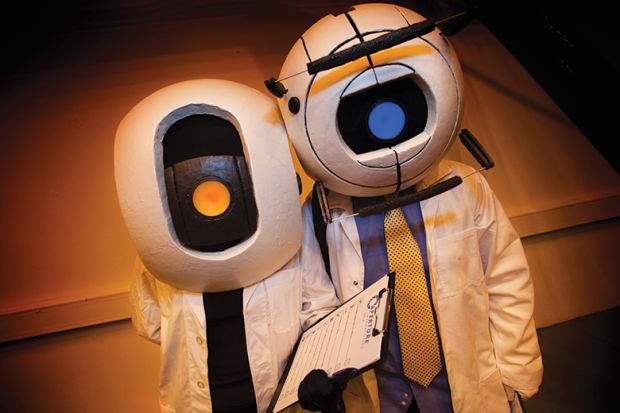The Covid-19 pandemic is accelerating a long-sought overhaul of the undergraduate lab experience, spurring the adoption of online simulators that may make science teaching more equitable, efficient and effective.
The coronavirus arrived at a moment when some educators were already trying to make the case that one of the classic hands-on college experiences − the science lab − might actually benefit from virtual accompaniment.
The advantages, advocates argue, include the fact that typical lab courses are expensive and therefore exclusive, can be too focused on rote skills and do not leave enough time for individual and collaborative exploration.
“One of our major challenges” to reform, said Robert Lue, a professor of the practice of molecular and cellular biology at Harvard University, “is that the notion of doing labs has been kind of rolling almost blindly for decades now”.
The timing of the pandemic may be proving especially fortuitous in Professor Lue’s case. In January, just before the world came to learn of Covid-19 and close down in response, he announced the start of LabXchange, a free online set of virtual lab experiences.
The platform, with financing led by the Amgen Foundation, quickly swelled to nearly 1 million teachers and students using it worldwide, with about half at the postsecondary level.
Professor Lue describes LabXchange, with its offerings in fields that include chemistry and various life sciences, as “kind of the lab version of flipping the classroom”. That means students grow competent with the online simulators before coming to class to test out and apply their abilities.
Others have been pursuing similar ideas − and seeing promise. They include Dominique Durand, professor of biomedical engineering at Case Western Reserve University, who for five years has been creating online adaptations of his master’s-level courses.
His projects, such as creating virtual models of the circuitry that can amplify the signal of an electrocardiogram, have helped him better identify the actual purpose of lab work.
“It turns out, it’s not really so much about hands-on,” he said. “It’s more about solving problems − how do you teach problem-solving skills?”
That has also been the realisation of Martin Storksdieck, a professor of education at Oregon State University. As director of OSU’s STEM Research Center, Professor Storksdieck has concluded that instructors often have not considered the specific values that labs deliver.
The in-person lab experience is important, he said, but for reasons that may not even be recognised by teachers, such as the human and emotional responses to noises and smells encountered in a lab.
At the same time, Professor Storksdieck said, other key educational benefits − such as giving students the room to wander rather than being handed detailed “recipes” to make and steps to follow − can be incorporated or overlooked in either a real or virtual environment.
The online option, however, can often be done at a lower cost, allowing its use by more students at universities and beyond, and affording the students greater freedom to overcome mistakes through repeated attempts.
Yet not all in higher education are convinced, especially in a complicated environment where online education has long been disparaged, leaving institutions now fearing severe financial consequences from Covid if they cannot quickly resume the in-person experience typically associated with college.
Many US university leaders have been at pains to emphasise the safety procedures they are planning for the autumn semester, while describing most online alternatives as a disappointment to be avoided.
They include Robert Robbins, president of the University of Arizona, who hosted a briefing on his reopening plans in which he hoped his students aren’t “relegated” by the virus to online worlds, and cited science labs as an especially compelling attraction.
“I keep using the example over and over: I don’t know how you do organic chemistry online; I don’t know how you do gross anatomy dissection online,” Dr Robbins said. “So, some of these classes, I think it’s imperative to have some face-to-face activity.”
Others are more open to developing virtual versions of lab classes, especially during the pandemic, but don’t see a major long-term role for them.
The move to online labs at the end of the spring semester had some benefits, said Heather Lewandowski, professor of physics at the University of Colorado at Boulder. One chief example, Professor Lewandowski said, was the increased realisation among some faculty that students did better when the disarray thrown up by the virus forced them to make more decisions on their own.
Science faculty had grown too prescriptive in their approaches, and “the pandemic broke that mould in some cases”, she said.
But virtual labs are not a long-term solution, Professor Lewandowski added. “It’s going to be a stopgap method,” she said. “Once we’re back in person, remote labs, I predict, will go away almost entirely − people miss the in-person experience.”
Professors Lue and Durand both agree that the in-person experience will remain an essential tool but see it as an expanding complement to virtual methods.
And while studying dissections often works better in computer simulations, Professor Durand acknowledged that Dr Robbins was correct to note that some courses, such as organic chemistry, appear especially difficult to adapt.
“But only,” he said, “because nobody has figured out how to do it yet.”
后记
Print headline: Are digital experiments here to stay?
请先注册再继续
为何要注册?
- 注册是免费的,而且十分便捷
- 注册成功后,您每月可免费阅读3篇文章
- 订阅我们的邮件
已经注册或者是已订阅?

